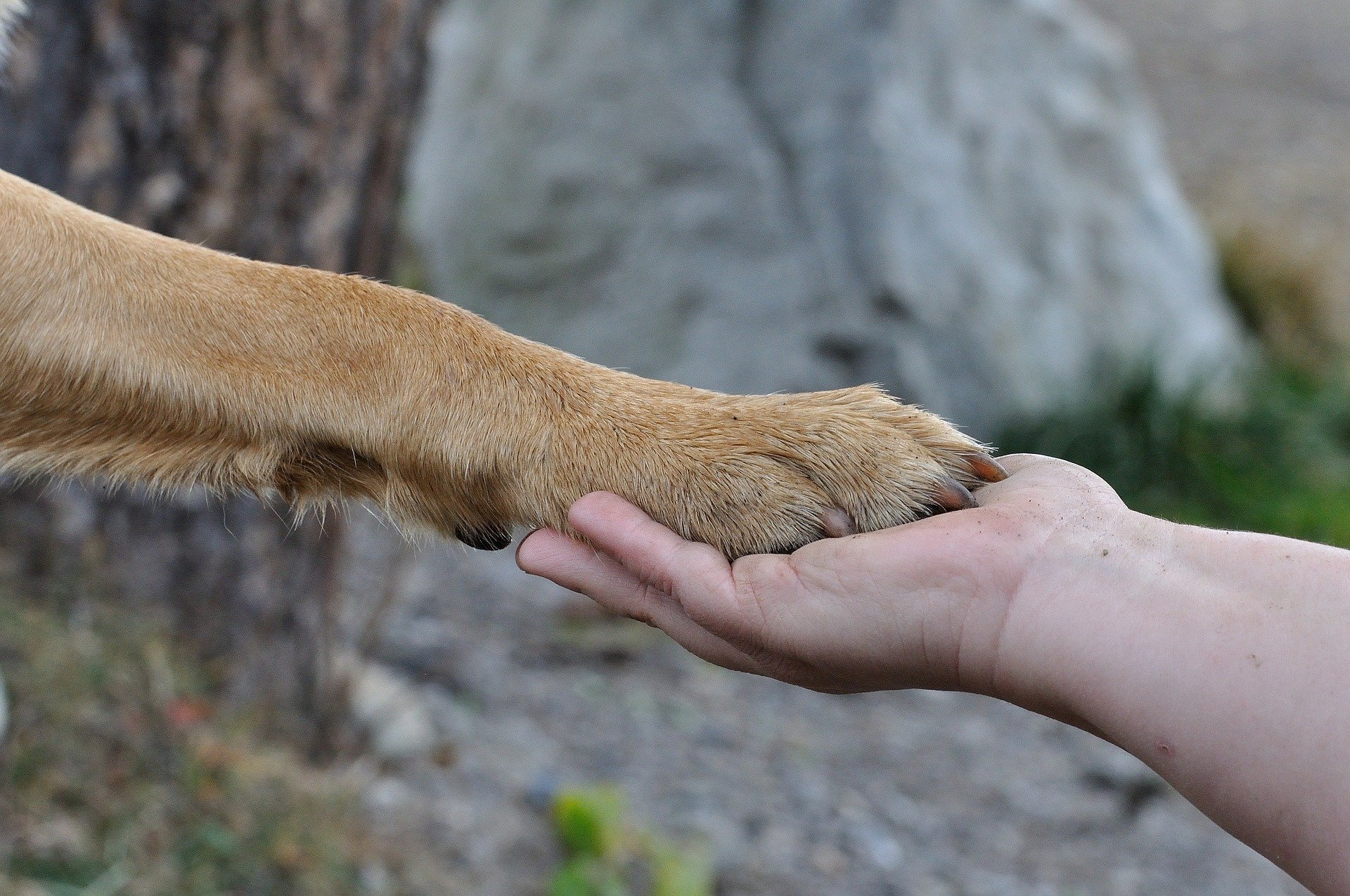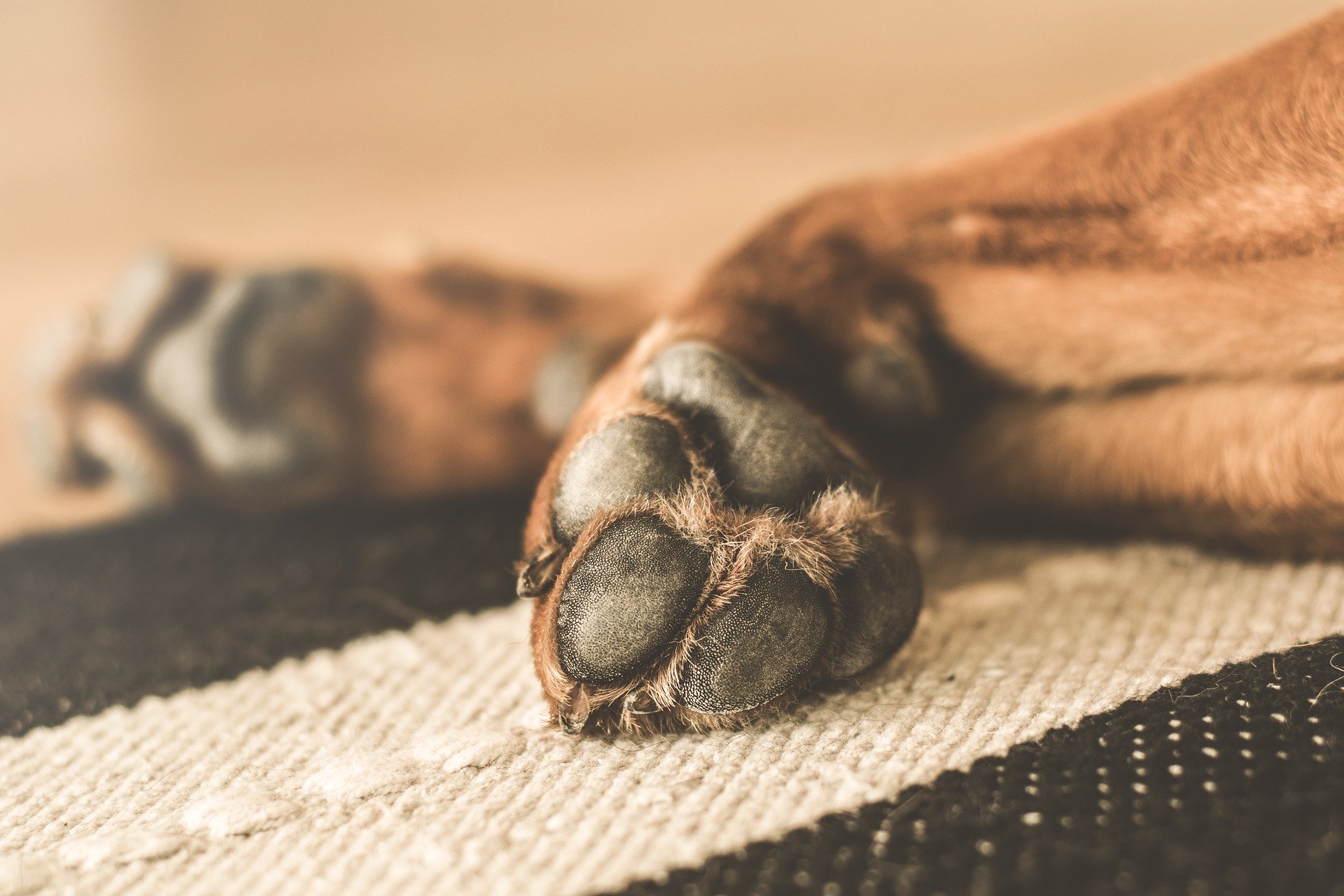
There are certain cases in which we can see that our dog limps a bit on one of its hind legs, and walk again as usual after a while. In other cases, lameness persists for a long period, with variable intensity and even limits the movements of the dog.
So if your pet has this problem, you should know that in this article we will present some possible answers for which this condition appears.

Causes of a dog limping on one hind leg
When you see your dog limping on its hind leg, you have most likely worried about knowing if it is okay, if it has hurt itself, if it has something stuck ... Actually, there are many causes why a dog can limp. The most common can be arthritis, injuries, or even a tear of the anterior cruciate ligament. But there is actually more.
Therefore, here we want to tell you about the different causes why a dog limps, as well as what you should do in each case to alleviate your pet's ailment.
Patella luxation
The patella is housed between the trochlea of the femur, within the groove specially designed for it; When we focus, both the extension and flexion of the knee require such movements, down or up. However, in some cases the patella becomes dislocated, and begins to move laterally or medially.
The natural housing of the patella is defective from birth, and it will move forward, since there is nothing to keep it. It normally affects breeds such as the Yorkshire, Toy Poodle and Pekingese, etc. and in certain cases it is only one of the numbers congenital defects that these races present at the bone level.
When it is observed that the dog jumps, keeping the affected leg away from the body while going up or down the stairs and after a few steps it walks normally. It is usually believed that it is because it is a puppy; however, it should be consulted especially if it belongs to any of the races that we have mentioned.
Hip dysplasia
Hip dysplasia is a pathology that despite having a genetic basis, numerous causes contribute (environmental, management, food, etc.). Summarizing, it can be said that the head of the femur does not fit properly within the hollow of the pelvis for her, and despite the fact that it is triggered by multiple factors, the animal that presents it has a "genetic programming" to develop it. So seeking to reproduce dogs that suffer from this congenital disease is completely reprehensible.
In severe cases, the dysplasia has to be corrected with orthopedic surgery, which is usually complicated. There are many techniques, such as arthroplasty (excision of the head of the femur) when it is a small or medium dog and is not able to support too much weight, or as the triple pelvic osteotomy which consists of an aggressive intervention that, in certain cases, is the only solution to get the dog to walk again.

Wounds or objects on the leg
One of the problems that dogs can have is that, when they walk, they nail something, or injure themselves. It is similar to if you walked barefoot and stuck a pebble, or cut the sole of your foot.
For dogs, their legs are bare, and this causes objects to be nailed. If they are also older, the pads of the feet are more deteriorated and that makes it more difficult for them to walk on different surfaces because they feel more sorry.
In the case of having a foreign body embedded, the treatment begins by removing it with tweezers.. As a general rule, once removed, a small wound may remain, and it must be treated with a little hydrogen peroxide or alcohol.
Now, if we are talking about a wound and it is deep, not only will it have to be cleaned with hydrogen peroxide, but it would be advisable to go to the vet to put some stitches on it in case it was deep and did not stop bleeding.
Sprain
Many times we think that dogs can only sprain their front legs, but their back legs are also prone to it. For example, when they jump, or when they run like crazy. In one of those, they can put the leg wrong, or that it becomes destabilized and with it, they get a sprain in return.
Sprains have the same pattern as in humans, that is, it hurts a lot, you do not support your foot and it is also swollen and soft to the touch but very sore when you do.
In this case, you will have to reduce the swelling, and for this, nothing like a cold compress or ice in the area. Sprains usually heal on their own after a few days of rest, but there are times when you can't and then you should go to the vet in case the leg needs to be cast so that it heals well.
Dislocation of bones
Bone dislocation means that one of the bones in the hind leg has slipped out of place. And that's like when your shoulder bone comes out, it hurts a lot. However, don't ever put it on yourself, because, in that attempt to alleviate it, you can worsen the situation and internal bleeding may occur.
It is best to go to the vet who will take care of putting the bones in place. This can be done without anesthetizing the dog, or by doing it and checking with an ultrasound to make sure that the bone is in place and that there are no internal bleeding that could endanger the life of your pet.
If your dog limps on the back leg it may be due to a broken bone
Well, yes, your dog too, at a given moment, from a run, from a game, from a fall ... it can end up with a broken bone. Sometimes they do not realize it at first (because the adrenaline makes them continue "to the top"), but later they will begin to sympathize with her, and even to not support the leg, so that she does not let you touch it ... In the most cases extremes, you will see that his leg hangs and that it moves as if it were not part of him.
In those cases, take him to the vet because he will need to treat her well (casting, or even surgery).
Possible cysts on the hind leg
Having a cyst doesn't have to scare you. Yes, it is something that will make you go off all the alarms you have and may have, but it does not have to be bad. When a dog has a cyst on its paw, You will notice it because it has the inflamed and reddish part. Also, you will notice it hard, like a ball.
The only solution in this case is to take him to the vet. He will observe you and can give you a treatment with antibiotics, or he can also suggest a small intervention to completely eliminate the problem and try not to reappear.
The dreaded arthritis
This problem is much greater than all the previous ones, and today it does not have a cure that we can say will eliminate it 100%, but there is a treatment to improve the quality of life of your dog.
La arthritis It is a disease that degenerates the joints and can occur after 3 years. As we tell you, there is no cure, but yes there is medication that can alleviate the pain and make your day to day is not so difficult.
To do this, you have to go to your veterinarian where they will do several tests (x-rays, blood tests ...) and establish a daily treatment as well as some guidelines to follow in times of crisis (when the legs hurt the most).
panosteitis
Finally, we will talk about panosteitis, a little known disease, but that can affect puppies (from 5 to 18 months), especially some large dog breeds, such as the German shepherd.
This problem is characterized by intermittent lameness occursIn other words, there are times when the dog leads a normal life, and others when it cannot move its leg. Although that means that it can be cured naturally and spontaneously, when several crises occur, the most appropriate thing is to go to the veterinarian to assess the condition of the puppy, either by X-ray or by ultrasound. That way, you can see if you have any significant or treatable problems.
With the passage of time, this pain intensifies, and the animal suffers a lot, so alleviating the effects is the best solution to alleviate it.
Anterior cruciate ligament tear
Also called "footballers injuryIt is often among the most common conditions in canine trauma, causing dogs to limp on one hind leg.
What is the anterior cruciate ligament? It is a fibrous band which joins the femur with the tibia, anchoring the latter to prevent it from sliding inward or forward when moving the knee. There is another cruciate ligament which also offers support and consists of the internal cruciate ligament; however, the outermost one is the one that most often suffers breakage. Both ligaments, like the menisci and some other structures, are responsible for controlling the mobility of the knee, in addition to the femur, patella, tibia, etc.
Are there breeds predisposed to suffering an anterior cruciate ligament tear?

In order to simplify the information, it can be said that it mainly affects two different canine groups which are:
Small-medium size dogs
Especially those that have short legs and are of middle age, such as the Pug and the Shih Tzu. These breeds, apart, have the disadvantage of being predisposed to develop discolagenosis problems, which consists of a degeneration of joint collagen which increases the risk of suffering from this class of pathologies.
Large-giant size dogs
It mainly affects breeds such as the Rottweiler, Labrador and the Neapolitan mastiff. Although, any dog could have a limp in a hind leg due to a torn anterior cruciate ligament, the truth is that it especially affects dogs that perform dry jumps with the purpose of getting on the sofas, attempted exercises without any prior warm-up and even a standing rotation to spin and catch a ball.
How to distinguish that limp from others?
Generally, the dog should be caught by one hind leg due to the rupture of the anterior cruciate ligament, it appears abruptly and is quite painful, so the dogs walk without supporting the leg or support it very slightly. While standing still they usually extend the affected leg outwards, moving it away from the body so that it does not have to support its weight and when sitting, they extend it outwards or in front of the body. In this way, they manage to relieve, a little, the tension in your knee.
The dog may have knee inflammation, although it cannot always be seen. Symptoms can be less or more severe, depending on whether the ligament has been partially or completely torn.
How is an anterior cruciate ligament tear diagnosed?
The diagnosis will depend on each case, although the veterinarian may need to sedate the dog to perform what is known as "drawer test”Where you will try to move the tibia forward making sure to keep the femur in place. When the ligament is torn, the tibia will travel far forward without problems, since there is nothing to hold it in place. It is necessary to sedate the dog because the movement will cause pain and when awake it will show resistance.
Although the X-ray does not allow to confirm the tear, it indicates possible signs of osteoarthritis which appear during the first weeks after the ligament tear. The knee joint begins to degenerate, the joint surfaces present irregularities and everything worsens the prognosis, therefore it is important to take your dog to the vet upon perceiving a hind leg limping, even slightly.
Is there a treatment for an anterior cruciate ligament tear?
There are two kinds of treatments:
Conservative medical treatment
When surgery is not recommended, measures of rehabilitation through physical therapy, which could consist of movements in water and / or laser therapy, as well as the administration of products that help reduce inflammation. Likewise, a certain diet must be followed to prevent the dog from gaining weight and thus retract osteoarthritis as much as possible and / or promote the recovery of articular cartilage.
Surgical treatment
The surgical intervention demands a lot of dedication during the following days, as well as a continuous monitoring of the dog to prevent possible sudden movements. The dog will go home wearing a bandage that will completely cover the affected leg, and it will be the owner's responsibility to ensure that it remains at rest.
What is the treatment?

The treatment is complex and it is possible to treat rehabilitation through physical therapy in mild cases, also providing a specially prepared quality diet for bone and joint pathologies and making sure not to offer excess calcium. Cartilage protectors and anti-inflammatories, such as chondroitin sulfate and hyaluronic acid, are indicated in order to relieve symptoms and for progression.
My dog limped and did not show anything in X-rays, always with pills…. Now she has actually improved and I don't even see her limp since I gave her mascosana cissus.
I am a veterinarian and I have been seeing these capsules in mascosana, cissus. They do not wholesale it is their own brand. It is very interesting because there are other cissus but 100% there are none or it is very difficult to find.
Good afternoon. Please support me. My 10-year-old dog has a very bad pain in her left hind leg. Keep eating and drinking water, but apparently it is unbearable… I barely touch her and she cries very hard, walks with difficulty and stays lying down most of the time. Please help me. I have not taken her to a vet, first because of current health problems around the world, but also because when taking her, what they always say: «Well, it's because of age ... and that's all.
The article is very good, but my dog limps on one back leg but has no pain, he goes up the stairs well, only when he goes down I pick him up every so often, they advised me to put vitamins, since they think it is muscular. To do.
My dog is a tilden of almost 8 years old and for 3 days his back leg lame shows no sign of pain but he cannot stand because his leg is going forward. I am giving him half a Rymadil pill, it may be that some are needed vitamin? Thanks